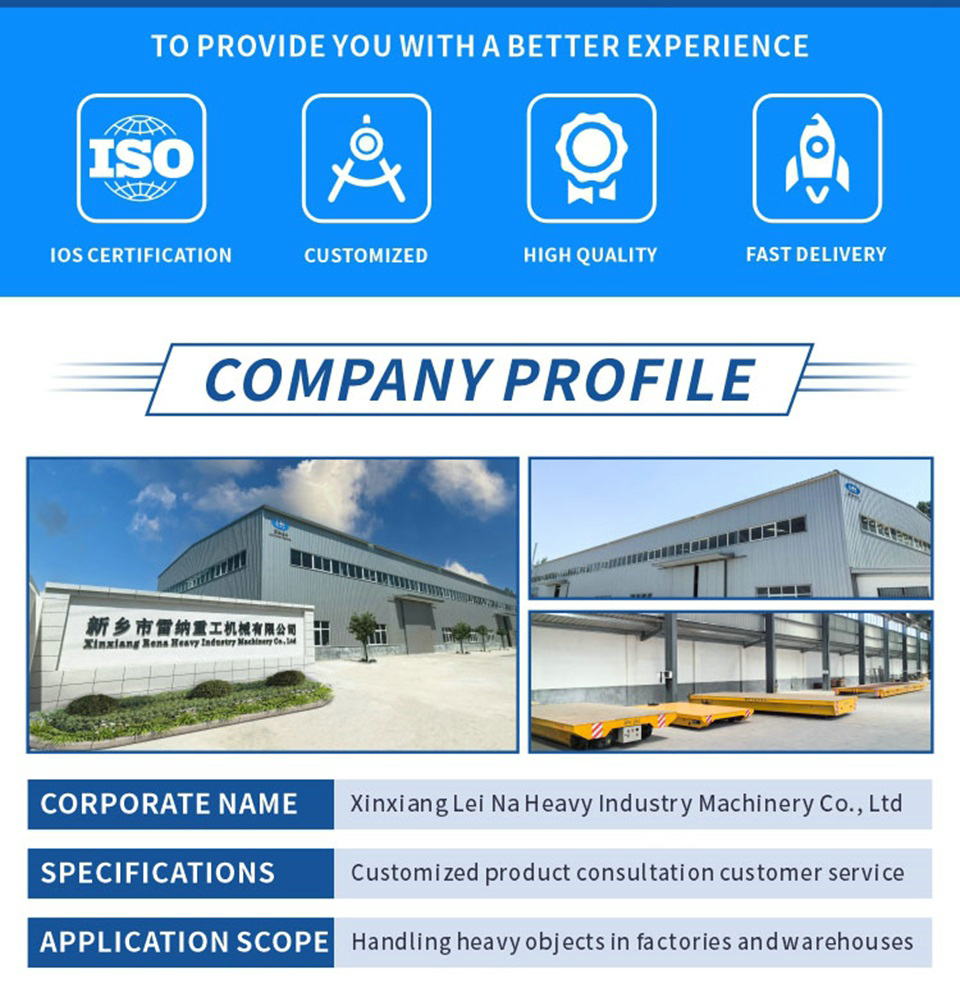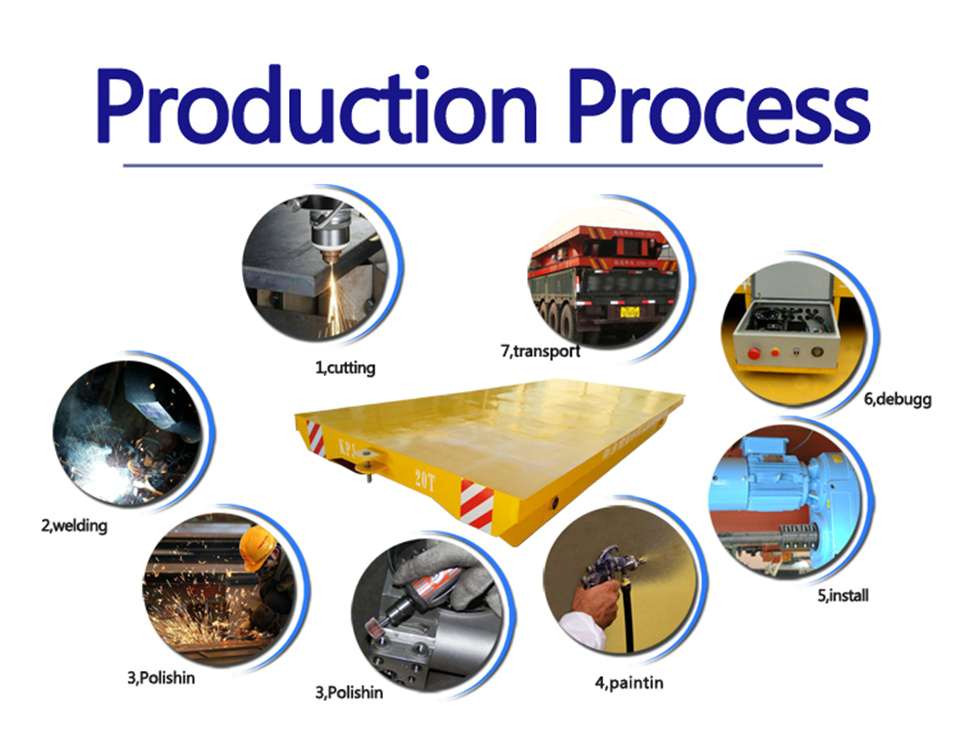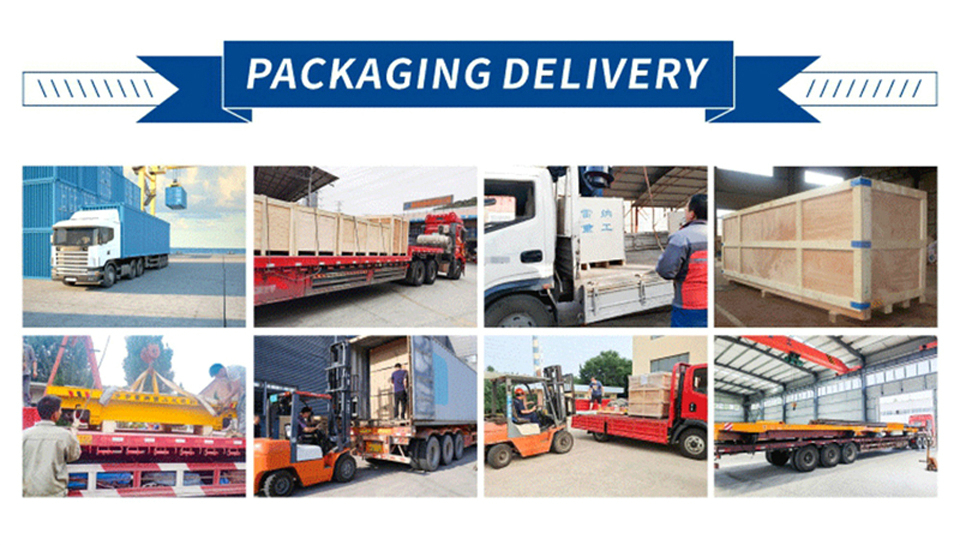As a means of transportation, electric trackless transfer vehicles (also called electric trackless trolleys or electric trackless transfer carts) are widely used in factories, warehouses, workshops and logistics centers. Its advantages are mainly reflected in the following aspects:
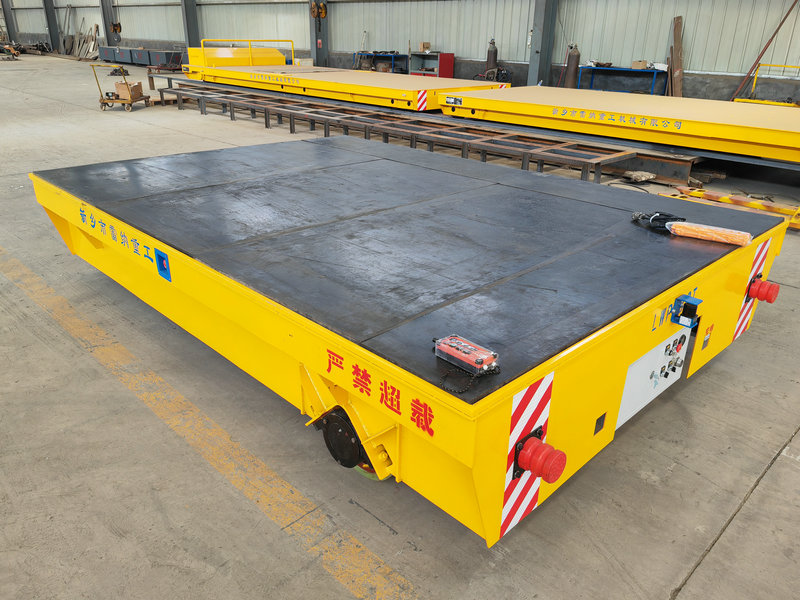
| Model | LWP-2T | LWP-5T | LWP-10T | LWP-20T | LWP-30T | LWP-50T | LWP-100T |
| Rated load | 2t | 5t | 10t | 20t | 30t | 50t | 100t |
| Length(mm) | 2000 | 2200 | 2300 | 2400 | 3500 | 5500 | 6600 |
| Width(mm) | 1500 | 2000 | 2000 | 2200 | 2600 | 2500 | 3000 |
| Heigth(mm) | 450 | 500 | 550 | 600 | 700 | 800 | 1200 |
| Wheel Base (mm) | 250 | 300 | 350 | 400 | 450 | 600 | 600 |
| Motor Power (Kw) | 2*1.2 | 2*1.5 | 2*2.2 | 2*4.5 | 2*5.5 | 2*7.5 | 40 |
| Battery Capacity(Ah) | 250 | 180 | 250 | 400 | 450 | 500 | 1000 |
| Battery Voltage (V) | 24 | 48 | 48 | 48 | 48 | 72 | 72 |
| Running Speed (m/min) | 0-30 | 0-30 | 0-30 | 0-25 | 0-25 | 0-25 | 0-25 |
1. High flexibility
Trackless design: Unlike traditional rail vehicles, electric trackless transfer vehicles do not rely on fixed tracks, can travel freely, adapt to various complex environments and layouts, and have higher flexibility.
Strong adaptability: It can operate in narrow spaces, complex paths or different types of ground, avoiding the limitation of traditional rail vehicles that need to lay tracks.
2. Reduce operating costs
No need for track laying and maintenance: Electric trackless transfer vehicles do not require track systems, saving the cost of track construction and maintenance.
Reduce manual operation: Through automated or semi-automated control, the need for manual operation is reduced, thereby reducing labor costs.
3. Energy saving and environmental protection
Electric drive: Electric trackless transfer vehicles use electric drive, do not produce exhaust emissions, and meet environmental protection requirements. Compared with traditional internal combustion locomotives, electric vehicles have higher energy efficiency and less noise, reducing environmental pollution and noise pollution.
High energy utilization rate: The power conversion efficiency of the electric drive system is high, which can better utilize electrical energy and save energy.
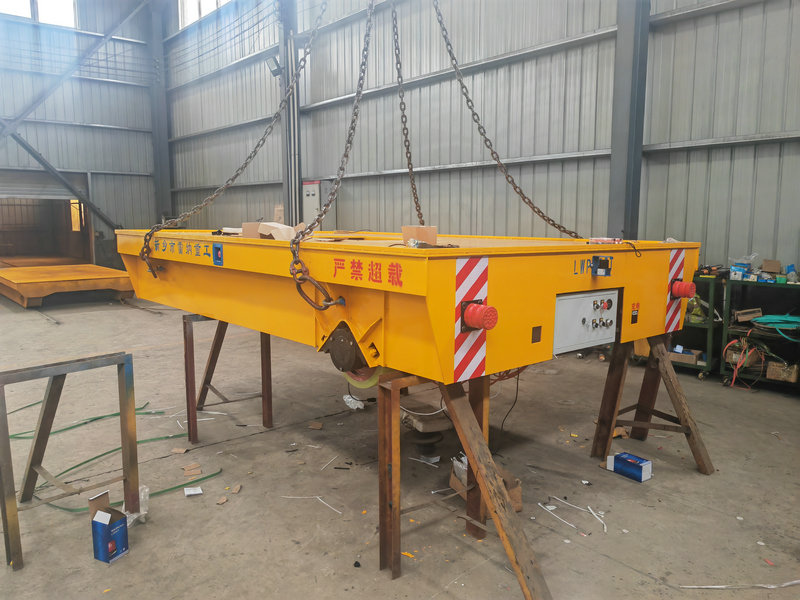
4. High safety
Anti-collision system: Modern electric trackless transfer vehicles are often equipped with anti-collision sensors, automatic obstacle avoidance systems and other functions, which can effectively avoid accidental collisions and ensure the safety of the transportation process.
Smooth operation: Due to the stability of electric drive, the operation of electric trackless transfer vehicles is smoother, reducing the damage caused by vibration during the transportation of goods.
5. Efficient transportation
High load capacity: Electric trackless transfer vehicles generally have a large load capacity and can transport bulk goods, which improves transportation efficiency.
Automated scheduling: Many electric trackless transfer vehicles can be scheduled and managed through automated systems, which improves the efficiency and accuracy of material transportation.
6. Customizable design
Multiple models and configurations: Electric trackless transfer vehicles can be customized according to different transportation needs, including different loads, different body sizes, different operating speeds, etc., which can meet the needs of different industrial sites.
Intelligent functions: Modern electric trackless transfer vehicles can integrate high-end functions such as automatic navigation, remote control, and intelligent scheduling, further improving work efficiency and intelligence.
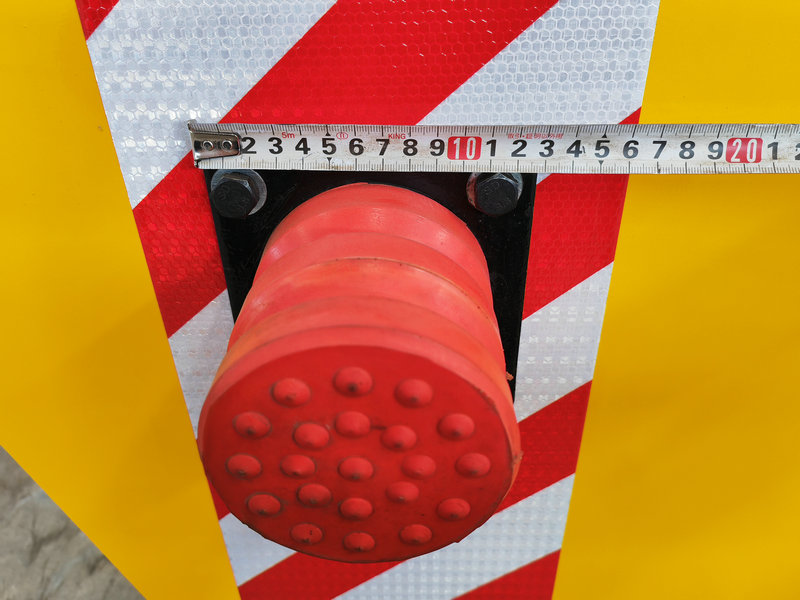
7. Low maintenance cost
Electric system maintenance is simple: Compared with traditional internal combustion drive systems, electric drive systems have a relatively simple structure, a low failure rate, and simple daily maintenance and low cost.
Long service life: The battery life of electric trackless transfer vehicles and the service life of electric drive systems are long, which can reduce the cost of frequent replacement of parts.
8. Improve the working environment
Low noise: Electric trackless transfer vehicles have low noise during operation, which can create a quieter and more comfortable working environment, especially suitable for places with high noise requirements, such as medical and food processing industries.
No exhaust emissions: Compared with internal combustion vehicles, electric trackless transfer vehicles have no exhaust emissions, which is more in line with modern environmental protection concepts.
About Leina
